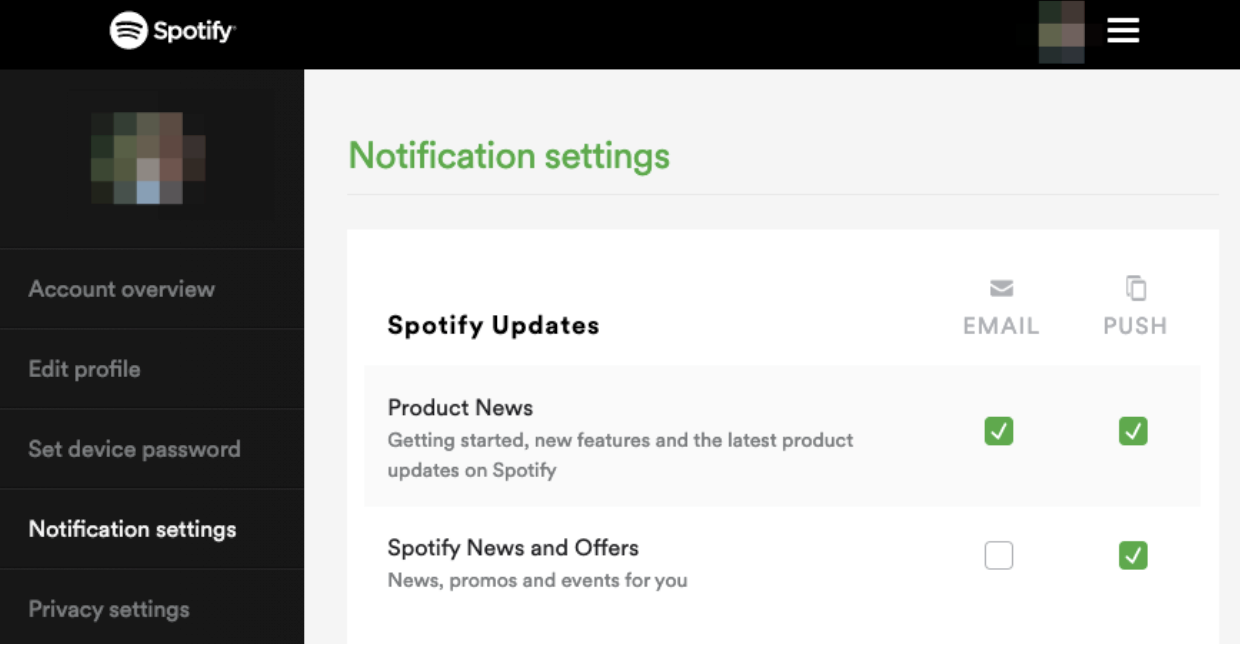Improve email deliverability: 8 crucial steps (2022)
Ensure near perfect email marketing deliverability rate with a good email deliverability tester and email deliverability and email delivery best practices
A strong email campaign is an essential element for any business. This is what makes it so much more frustrating if your emails are landing straight in the spam folder. Make sure that you take all crucial measures to improve your email deliverability and avoid the many pitfalls so many business and beginner marketers fall into.
This back-to-basics guide, will lay down what you need to know, and everything you have to do, in order to get near perfect email deliverability.
This guide will take you through exactly what email deliverability is, why it is important to your business, and how you can improve your business’s email deliverability?
What is email deliverability?
Email deliverability is your ability to ensure that your emails are successfully delivered into your contact’s inbox without their email provider flagging them as spam and tossing them into the junk pile. In order to be delivered, an email has to pass through security, IP reputation, and spam filters to ensure that it’s coming from a trusted source and that it’s not part of a phishing or spam campaign.
To put it simply, email deliverability is how well your emails succeed in passing through these checks and filters.

Deliverability Vs. delivery
Email delivery refers to whether or not the server of your contact’s email provider actually received the email, as opposed to email deliverability that refers to whether your email was or was not filtered out when reaching your contact’s server. You will recognize an issue with email delivery because you will receiving a message from your server telling you of an error while attempting to reach your contact’s server.
A common reason for delivery failure is that the server is unavailable or because the email address is no longer valid (which is why it is important to always verify email addresses).
But even if your recipient’s email is perfectly valid, and the delivery of your email has been successful, that’s not a guarantee that it’s going to end up in your contact’s inbox. Email deliverability refers to what happens to your email at the point where it reaches your contact’s email server.
The most common reason for email deliverability issues is that some element of the email has not passed the various filters on a contact’s email server and has been flagged by that server as spam, moving it directly into the junk folder.
Your email may have been delivered, but that doesn’t mean that it has necessarily arrived in the location that you wanted it to.
Why is email deliverability important?
1. Email deliverability is essential to your marketing
In the digital age, there’s no doubt that email marketing is an incredibly important part of any business’s overall marketing strategy. Email is a strategy that has been shown to consistently provide a strong return on investment for many marketers and businesses.
A well-constructed single email or drip email campaigns is one of the most valuable tools in your arsenal but it’s not going to be worth a great deal if those emails just end up going straight into the spam folder.
Making your subject lines and emails eye-catching and engaging is important, but that can only go so far when it comes to making sure that your emails are actually ending up in front of people.
2. Standing out in the email world can be a challenge
If there’s one thing that you can be sure of, it’s that the inboxes of customers and clients are going to be seriously busy places. This makes them extremely competitive.
With almost 4 billion email accounts worldwide and hundreds of billions of emails sent and received every day, there’s no doubt that getting your emails noticed and standing out from the competition can be a serious challenge.
Not only that but more and more email servers are working to add increased safeguards. This can be incredibly useful in filtering out harmful and useless spam, but it means that there is also a chance that your emails can get caught in that same net if you don’t take the time to improve your deliverability.
If you want to be able to find your space in the inboxes of your clients and customers, you’re going to have to earn it.
3. It’s the first step to greater engagement with your audience
One of the most important things to consider when trying to improve your email deliverability, and your email marketing as a whole, is to make sure that consideration is from the perspective of your audience.
If you want to successfully market using email, you have to be sure that you’re sending out emails that people will actually want to open and read. Not only that but you need to make sure that you’re sending those emails out to the people who actually want them.
If you’re sending emails to people who haven’t provided you with permissions, you’re going to end up with high spam complaints and low open rates, both of which can be clear indicators that your email deliverability simply isn’t up to scratch.
8 Ways to improve your email deliverability
1. Work with engaged subscribers
One of the fastest ways to ensure that your emails have the lowest possible deliverability is to send them out to customers who have made no indication that they actually want to receive them in the first place.
This means that avoiding non-permission-based email lists is incredibly important but it actually goes further beyond that.
You need to be sure that you’re working with subscribers who are actually engaged with your emails. This means subscribers who have high rates of actually opening your emails and interacting directly with them.
This means that you not only need to know which of your subscribers are engaged with your emails but you also need to be sure that you’re providing them with the best possible content in order to keep those engagement levels as high as you can, thus building customer loyalty. It’s important as 91% of consumers are more likely to do business with brands that provide them with relevant personalized content and offers
Think about it, your subscribers are likely people who enjoy your company and your products. You should make the experience of interacting with your emails as engaging as any other interaction with your business.
t’s easy to think that people unsubscribe from your emails is a clear sign that your deliverability is not up to the correct standard. However, that’s not necessarily the case. The truth is that there is very little evidence to suggest that.
An incredibly common mistake that a lot of email marketers make is that they hide their unsubscribe options away and make them as difficult for users to find as possible.
While this might seem like a decent way of preventing people from unsubscribing, what actually ends up happening is that they take the path of least resistance by simply marking those emails as spam.
Making it as easy as possible for people to unsubscribe is incredibly important. Something as simple as placing a link at the top or the bottom of the email making it absolutely clear how to both subscribe and unsubscribe is far better for your email deliverability than trying to force your contacts to stay subscribed when they don’t want to.
2. Don’t sound spammy
NO:
YES:
You might assume that your email avoids sounding like spam because it passes the test of various email server’s algorithms and filters. And sure, that is important and a valuable thing to ensure.
However, it’s important to understand that marketers and subscribers often think of spam in rather different ways. Subscribers don’t care about whether it passes an algorithm, they care if it’s actually relevant to their interests and tailored to them.
One of the most common ways to make your email come off as obvious spam is to have the wrong name or pronouns attached.
Likewise, including information that will be completely irrelevant to the subscribers of your emails is going to massively reduce how personal they feel and will have people reaching for that “mark as spam” button in no time.
There are also things like WRITING IN ALL CAPS, overusing punctuation, or HTML errors that can very quickly trigger the spam filter on your subscriber’s email server.
Everything from the content of the email to the very first impression it makes with its subject should feel engaging and relevant to your customers’ desires and interests if you want them to stay in their inbox.
3. Stay consistent every time
One of the most common reasons that a lot of people end up deleting emails without opening them or immediately marking them as spam is that they appear to be coming from a sender that they do not recognize. It’s essentially like calling someone’s phone with your number withheld.
Some people will answer but you’re likely to lose a lot more people than you otherwise would. This means that you need to be sending your emails from the same address every time, preferably using an address that features your business website domain.
This can set your subscribers’ minds at ease and ensure that they know who it is that they’re receiving their emails from. You should also be sure that your sender name uses your business name and is as clear as possible.
Being able to remove any doubt as to who an email is from and what the content will likely be will make a huge difference when trying to improve the deliverability of all of your emails.
4. Clean your list every once in a while
Keeping a clean email list is something that far too many email marketers forget despite the fact that it is one of the most important things that you can do. You might want to hold onto old or unengaged subscribers simply because it feels as though having more people subscribed to your emails the better.
But the reality is that having an email list filled with contacts who either don’t exist anymore or simply don’t bother to engage with your emails can do serious damage to your deliverability and engagement rates on the whole.
These kinds of contacts could be email addresses that no longer exist or email addresses that are no longer active. One of the best ways to avoid these issues is to use a service that automatically blacklists any email addresses that come back with what is known as a “hard bounce”, which is an indicator of an inactive email address.
5. Provide options to your subscribers

While providing your subscribers with the option of being able to unsubscribe is undeniably important, it’s just as important to provide them other kinds of options as well.
After all, it might not be a matter of a contact wanting to unsubscribe because they don’t want to engage with your emails, it might simply be that there are too many emails coming in or that the topics of the email aren’t always relevant to them.
Providing recipients with options for everything from how frequently they receive emails from you to the kinds of topics that they receive emails about can help to keep them far more engaged. This is because it puts them in control of what ends up in their inbox beyond just marking things as spam.
Having these kinds of options can actually provide an incredibly valuable stepping stone before a recipient decides to fully unsubscribe. Without these options, you’re only providing them with a binary choice, subscribe or unsubscribe, when there might well be something in the middle that they would be much happier with
6. Segment, then segment some more
Engagement isn’t just a matter of making sure that your customers are happy with the emails that they’re receiving. It also helps to build a great deal of trust in your IP with their email provider.
If an internet service provider, or ISP, sees that your emails are being regularly opened and that recipients are regularly engaging with them, that can help you build up the trust that you need for strong deliverability.
One of the best ways to drive up these levels of engagement is to segment your email list. Rather than just sending out the same emails to everyone, divide your list into groups based on distinct characteristics.
That way you can be sure that the right emails are going to the right people to ensure that they’re actually getting opened and that contacts are actually engaging with them in a positive way.
“If you don’t do this, you’re just increasing the chances of your emails being ignored by the recipients and making it more likely that they will never make it in front of your contacts in the first place.”
7. Check your sender reputation
email deliverability tester
One of the most important things when it comes to deliverability is making sure that you have the best possible sender reputation. Of course, if you’re going to improve your sender reputation, you should know what it is in the first place.
There are a lot of factors that go into your sender reputation, including your domain reputation and the reputation of your email host.
Email Delivery Testing
An undelivered email is one of those business tasks whereby while it is not a major disaster, it can be highly embarrassing and disruptive. You might have prepared your servers for an influx of traffic or might be the person responsible for asking people to check their spam folders.
Email deliverability testing can eliminate those headaches before you even try to communicate with the wider world, and you can make the necessary changes to ensure broad reach and impressive open rates.
There are plenty of email delivery services like Mail-Tester, which gives you your email server’s IP address, and Talos, which can provide you with a report on your email reputation.
It’s recommended that you use some email delivery tester to check your sender’s reputation because this will help you better identify any possible issues.
Bonus tip: don’t buy your email lists
The temptation to buy your email lists for your marketing is pretty obvious. After all, it can seem like a great way to quickly increase the number of subscribers and recipients. However, the truth is that this is a great way to absolutely tank your deliverability and sender reputation.
For one thing, buying your email lists is one of the fastest ways to ensure that you have more spam complaints.
After all, you might be sending emails to more recipients when you buy an email list, but if they haven’t consented to receive those emails, the chances of those recipients marking them as spam becomes much higher.
Not only that but there’s a good chance that the list quality isn’t going to be very good with a lot of inactive or inaccurate email addresses.
The reality of email deliverability is that it’s a cumulative process. There is no one single thing that you can do that will make your deliverability “good” or “bad.” The importance of how it can help to ensure that your emails are actually reaching customers, especially the customers who actually want those emails, can’t be understated.
By ensuring that your emails are going to the right people, engaging those people with interesting content, and contributing to a strong sender reputation among ISPs, you can be sure that your email marketing will provide the return on investment that you really need.

